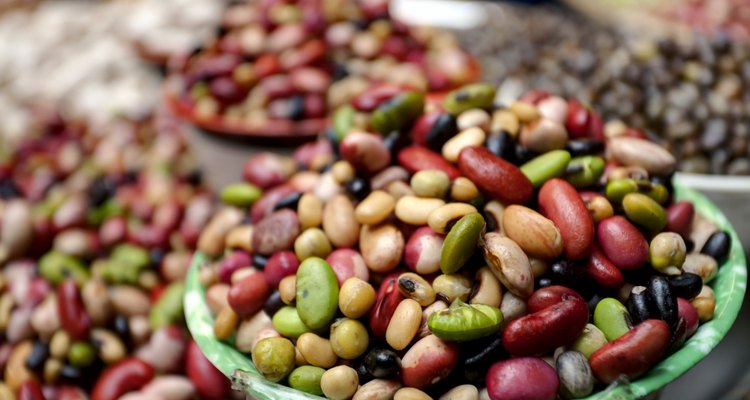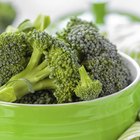
hanhanpeggy/iStock/Getty Images
Fiber fills you up, cleans your intestinal tract, enhances bowel regularity, improves cholesterol and aids with weight loss, according to Colorado State University Extension. However, fiber does present potential problems for some people. Science Daily advises that fiber may reduce your body’s capacity to absorb calcium. Calcium serves crucial functions for strong bones and teeth, muscles, nerves, cardiovascular health and blood pressure. Your daily needs for calcium increase as you age, ranging from 210 mg at birth to 1,200 mg if you are over 50. Those who are on a high-fiber diet, and especially diabetics, may limit the body’s ability to absorb the calcium they consume. Remedies can include eating foods that are high in both fiber and calcium to compensate for reductions in calcium absorption.
Fruit
Fruits are loaded with fiber, and many contain calcium. Acai berries, apricots, blackberries, blackcurrants, blueberries, dates, figs, grapefruit, lemons, mandarins, mulberries, oranges, papayas, plums, prickly pears and strawberries contain more calcium than other fruit. Calcium levels in these fruits range from 20 mg per 100 g of fruit for apricots and plums, to 260 mg for acai berries.
Vegetables
Vegetables are packed with fiber and many vegetables also contain calcium. At 300 mg per cup, spinach reigns as the most calcium-laden vegetable, followed by broccoli with180 mg per cup. Other high-calcium vegetables include beets, carrots, celery, green beans, onions, peas, potatoes and string beans. Most salad greens are filled with fiber and calcium, including argula, Boston lettuce, cabbage, chard, collard greens, kale, mustard greens, Romaine and turnip greens.
Legumes, Seeds and Nuts
Most beans are generous with fiber and calcium. Soybeans and winged beans provide the greatest calcium at about 240 mg per cup. Other beans high in both calcium and fiber include baked, black, garbanzo, great northern, lentils, mungo, navy, pink, pinto and white beans. Many nuts and seeds also provide calcium along with their fiber, including almonds, hazelnuts, sesame seeds and walnuts. One-quarter cup of almonds provides up to 90 mg of calcium.
Calcium-Fortified Foods
Check the labels of manufactured foods. You can get high fiber and calcium in several fortified products. Whole-grain calcium-fortified breakfast cereals provide a high portion of your daily recommended values of calcium, with some products offering 100 percent in a single serving. Fortified instant oatmeal also gives you calcium-rich fiber. Tofu made from calcium salts has significant fiber and provides 200 to 300 mg of calcium in a 4-ounce serving.
Related Articles

Nutrition Information on Blueberries

Fruits & Vegetables Rich in Potassium ...

Zinc Treatment for Rosacea

Foods Rich in Magnesium & Phosphorus

Vitamins for Mental Alertness

The Nutritional Value of Edamame Beans

L-Lysine for Hair Growth

Top Vegetables With Selenium

Is Soy Milk Casein-Free?

Why Are Date Fruits a Superfood?

A List of Foods That Contain Choline

Which Vegetables Produce the Most ...

How Can I Rid My Body of Water ...

Almonds and Magnesium

Copper Peptides Side Effects

What Is the Nutrition for Cranberry ...

The Carbohydrates in Blueberries

Peanuts Vs. Pistachios

List of High Protein Vegetables

High Fiber & Protein Diet Menus
References
Resources
Writer Bio
Jon Williams is a clinical psychologist and freelance writer. He has performed, presented and published research on a variety of psychological and physical health issues.
Photo Credits
hanhanpeggy/iStock/Getty Images